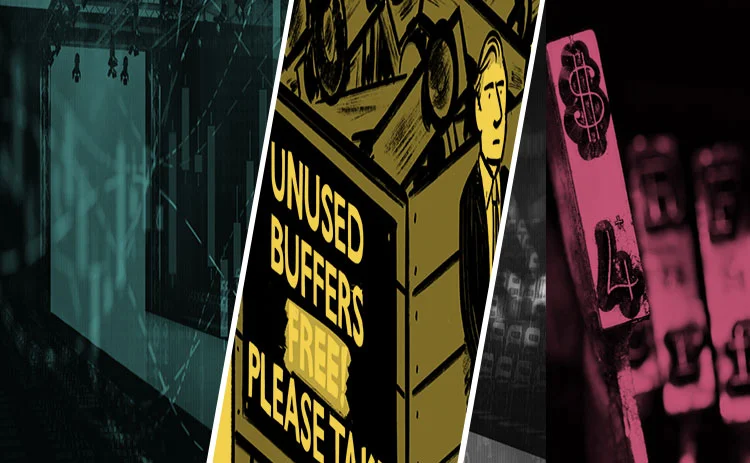
Capital buffers, contingent hedges and USD Libor
The week on Risk.net, November 28–December 4

Buffer stops? Why banks haven’t used Covid capital relief
Amid weak credit demand, banks haven’t availed themselves of capital buffers, but they still might
Strike a pose: deal contingents back in vogue after mid-year slump
M&A revival breathes life into deal contingent trades, but elevated risk keeps prices high
Dollar Libor reprieve sparks fallback uncertainty
Popular settings to end in June 2023; market seeks clarity over timing of fallback spread triggers
COMMENTARY: SA-CCR punch
A decade ago, the banking overlords in Basel decided to overhaul the capital regime for counterparty credit risk. One of the regulator-set approaches – the current exposure method – was widely criticised as primitive and blunt: unfit for modern derivatives markets.
The new, improved model was unveiled in 2014 as part of the Basel III package of reforms. The snappily titled ‘standardised approach for counterparty credit risk’ – SA-CCR for short – would be more sensitive to the varying risk of derivatives positions, its architects promised. It gave greater relief for collateralised portfolios, and would allow dealers to offset more of their exposures.
It took some years for national lawmakers to transpose the standards into local regulation. Finally, the US Federal Reserve announced that the country’s largest banks would be free to adopt the new regime from the end of June 2020. But the coronavirus crisis caused the Fed to change its plans and fire the starting gun three months earlier, in a bid to give emergency relief to the ailing financial sector. Surely banks would jump at the chance of the extra succour that SA-CCR offered.
As things turned out, no they wouldn’t.
Just one of the country’s eight global systemically important banks opted to implement the new rules: Bank of America. The others sat on their hands, much to the regulator’s private dismay.
The cause of their reticence is laid bare in a number of conversations Risk.net has had with senior bankers at large US banks. Institutions are wary of the rise in risk-weighted assets that the new rules might trigger. They dislike the crude 40% add-on that SA-CCR imposes on their exposures. And the divergent effect of the rules on different parts of the business is leading to heated internal debates over the costs and benefits of adopting the regime.
US banks have a deadline of January 2022 to adopt the new rules. Until then, they’re lobbying hard for further adjustments. Time will tell if they get their way.
STAT OF THE WEEK
Wells Fargo’s systemic risk score fell to 323 basis points in the third quarter. This figure was down from 335bp the previous quarter and, crucially, below the 330bp threshold at which a 2% systemic risk capital surcharge applies. If the bank maintains its sub-330bp score through the fourth quarter, then its capital add-on will drop to a welcome 1.5% come 2022.
QUOTE OF THE WEEK
“Execution algorithms change the way in which market participants access the market and in which orders are executed – including the fact that end-users have to manage additional risks – for example market risk” – Andréa Maechler, Swiss National Bank
Further reading
Only users who have a paid subscription or are part of a corporate subscription are able to print or copy content.
To access these options, along with all other subscription benefits, please contact info@risk.net or view our subscription options here: http://subscriptions.risk.net/subscribe
You are currently unable to print this content. Please contact info@risk.net to find out more.
You are currently unable to copy this content. Please contact info@risk.net to find out more.
Copyright Infopro Digital Limited. All rights reserved.
You may share this content using our article tools. Printing this content is for the sole use of the Authorised User (named subscriber), as outlined in our terms and conditions - https://www.infopro-insight.com/terms-conditions/insight-subscriptions/
If you would like to purchase additional rights please email info@risk.net
Copyright Infopro Digital Limited. All rights reserved.
You may share this content using our article tools. Copying this content is for the sole use of the Authorised User (named subscriber), as outlined in our terms and conditions - https://www.infopro-insight.com/terms-conditions/insight-subscriptions/
If you would like to purchase additional rights please email info@risk.net
More on 7 days in 60 seconds
Bank capital, margining and the return of FX
The week on Risk.net, December 12–18
Hedge fund losses, CLS and a capital floor
The week on Risk.net, December 5–11
SA-CCR, SOFR lending and model approval
The week on Risk.net, November 21-27, 2020
Fallbacks, Libor and the cultural risks of lockdown
The week on Risk.net, November 14-20, 2020
Climate risk, fixing Libor and tough times for US G-Sibs
The week on Risk.net, November 7-13, 2020
FVA pain, ethical hedging and a degraded copy of Trace
The week on Risk.net, October 31–November 6, 2020
Basis traders, prime brokers and election risk
The week on Risk.net, October 24-30, 2020
Covid bank tests, swap fix deferred and SOFR switch
The week on Risk.net, October 17-23, 2020








